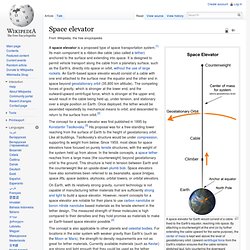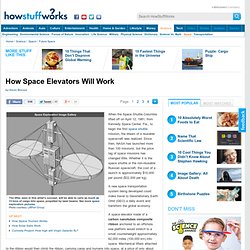

Monkey Moves Robot Using Mind Control. VEX Rack and Pinion Animated. Blender Tutorial: Very Beginner Tutorial :) Blender Tutorial For Beginners: Coffee Cup - 1 of 2. Ruby, Continued. Robotics.
VEX Robotics Design System - VEX Robotics. Autodesk VEX Robotics Curriculum. Another lifting mechanism commonly used in competition robotics is a linear elevator.

The VEX Robotics Design System has many different ways to create rotational mechanisms and low-friction rotating joints but has only a few methods for low-friction linear motion. As a result, this type of mechanism is less common than a rotating joint on competition robots; however, it does have some advantages. As seen in the example below, as the rotating joint raises upwards the robot’s claw will swing in an arc about the point of rotation. This means the distance between the claw and the drive base varies depending on the height the claw is at. If a driver is trying to score in goals of different heights, the driver must position the robot the correct distance away based on the height of the goal.
A claw mounted on a linear elevator is always a consistent distance from the drivebase, so regardless of the goal height, the driver will need to move the robot to the same distance from the goal. Robotics Organizing Committee. 10 Cool Robots You Will Want to Own. We are all familiar with that irritating little vacuum cleaner called the Roomba.

It is one of the first robots brought home by consumers to benefit their lives. We have seen the movies - the awesome gigantic robots that still seem to belong to the future. Out there is a world of technological geniuses who are creating and have built very cool and functional bots. Some may one day enrich our lives, others will simply makes us gawk. DOMO - Domo is a humanoid robot designed by MIT researchers as an aid for the elderly in mind. WAKAMARU - Wakamaru was built with the same intention as Domo but goes way beyond its capabilities. ROBOT CHEF - You come home from work and face more work cooking a meal for your family. HAWK - Hawk was designed in Canada with a hawk-type head and claw arms, thus its name.
CYBERT - Cybert is like a pesky pet. PARO - Paro is a stress-buster. VIOLIN-PLAYING ROBOT - Toyota has introduced an amazing robot that plays a pretty good violin. Robotics Organizing Committee. Space elevator. A space elevator for Earth would consist of a cable fixed to the Earth's equator, reaching into space.

By attaching a counterweight at the end (or by further extending the cable upward for the same purpose), the center of mass is kept well above the level of geostationary orbit. Upward centrifugal force from the Earth's rotation ensures that the cable remains stretched taut, fully countering the downward gravitational pull. Once above the geostationary level, climbers would have weight in the upward direction as the centrifugal force overpowers gravity.
VEX Cortex Video Trainer using ROBOTC. How Space Elevators Will Work" When the Space Shuttle Columbia lifted off on April 12, 1981, from Kennedy Space Center, Fla., to begin the first space shuttle mission, the dream of a reusable spacecraft was realized.

Since then, NASA has launched more than 100 missions, but the price tag of space missions has changed little. Whether it is the space shuttle or the non-reusable Russian spacecraft, the cost of a launch is approximately $10,000 per pound ($22,000 per kg). A new space transportation system being developed could make travel to Geostationary Earth Orbit (GEO) a daily event and transform the global economy. A space elevator made of a carbon nanotubes composite ribbon anchored to an offshore sea platform would stretch to a small counterweight approximately 62,000 miles (100,000 km) into space. Mechanical lifters attached to the ribbon would then climb the ribbon, carrying cargo and humans into space, at a price of only about $100 to $400 per pound ($220 to $880 per kg).
Taylor higa semester 2.